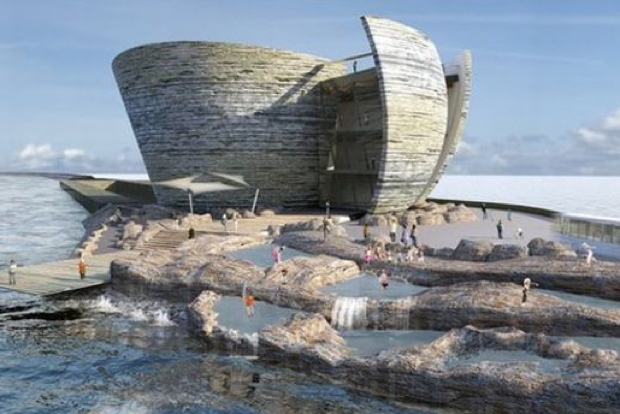If there ever was a form of green energy which showed promise it is surely tidal power. Compared with wind farms and solar farms, tidal barrages have the potential to generate significant quantities of reliable energy. While the tides are intermittent in any one location, the times of high and low tide vary along the coast such that a string of them working in tandem could produce a steady load of electricity, whatever the weather and whatever the time of day.
So does that mean that the green lobby is cheering the publication of Charles Hendry’s report recommending the go-ahead for the construction of a tidal lagoon power station in Swansea Bay? You bet it doesn’t. Already the bird and fish lobbies are protesting. Wading birds, it transpires, would lose a bit of mud and sand at low tide, while a few salmon and trout might find their way into turbines (Natural Resources Wales predicts that 21 per cent of salmon passing through could be killed, though why they could be kept out with the same netting to keep fish in salmon and trout farms in Scottish lochs I don’t understand). The tidal lagoon was granted planning permission by the government in 2015 but still requires a ‘marine licence’ from Natural Resources Wales, so pressure groups still have an opportunity to lobby to block it.
True, the £1.3 billion construction cost of the lagoon isn’t cheap. It will require a subsidy which initially will make electricity even more expensive than that from Hinkley C nuclear power station. But only initially – while Hinkley’s operators EDF have been promised a strike price of £92.50 per MWh, rising with inflation for 35 years, subsidies for the Swansea Bay lagoon would diminish. With an estimated life of 120 years it will still be around long after Hinkley has been decommissioned, at public expense. Moreover, Swansea Bay is a relatively small-scale demonstration project, so costs are bound to be relatively high. If it lead to larger tidal barrages the unit cost of electricity from this source will fall.
There is another aspect to the cost. Eventually, we will need barrages across many estuaries in Southern England to prevent against tidal surges such as that predicted for today. And that is without sea level rise – as the land in the South East is sinking. The costs of tidal electricity, therefore, will be shared with the necessary cost of coastal defences.
Even Greenpeace (!) is in favour of the Swansea Bay lagoon. For once, can we please stop flapping about a few inconvenienced fish and birds and put human needs first. Let’s get on and build the lagoon.







Comments